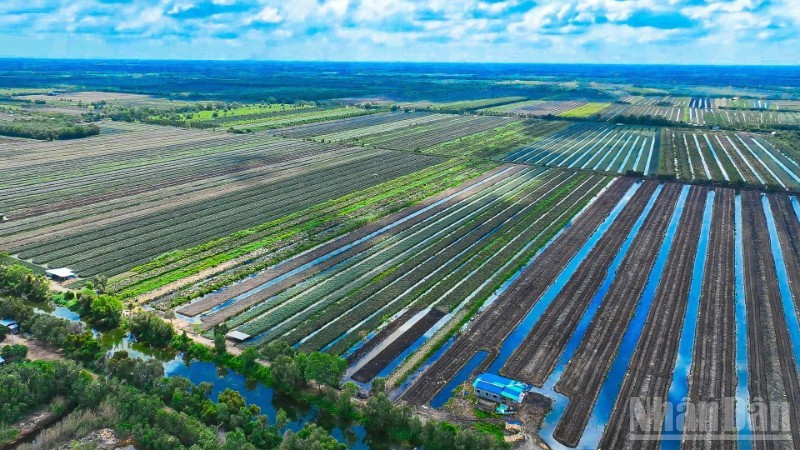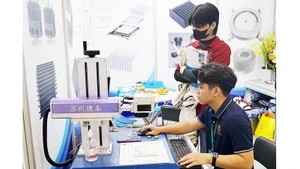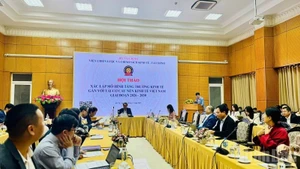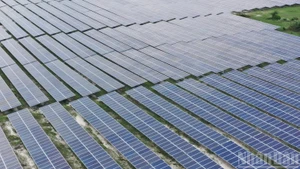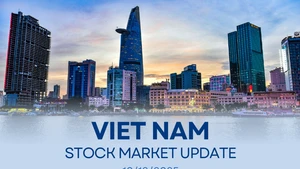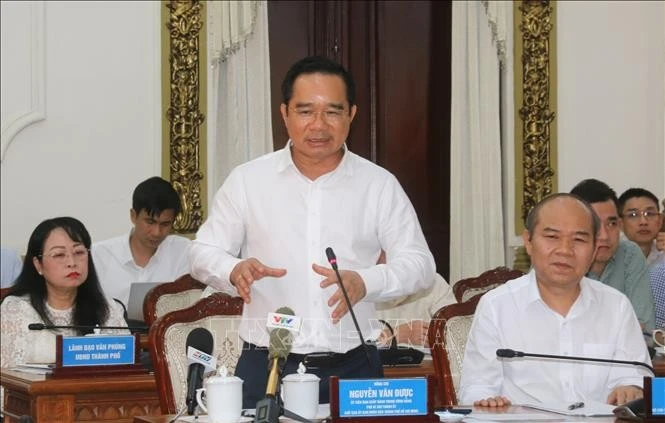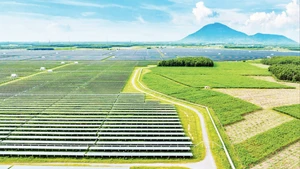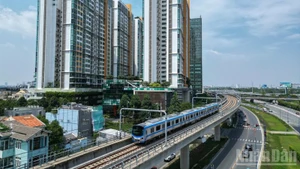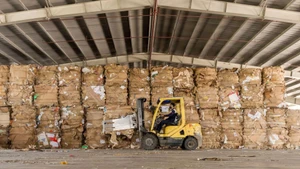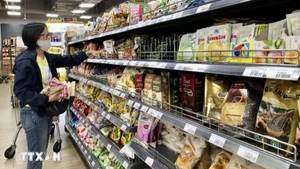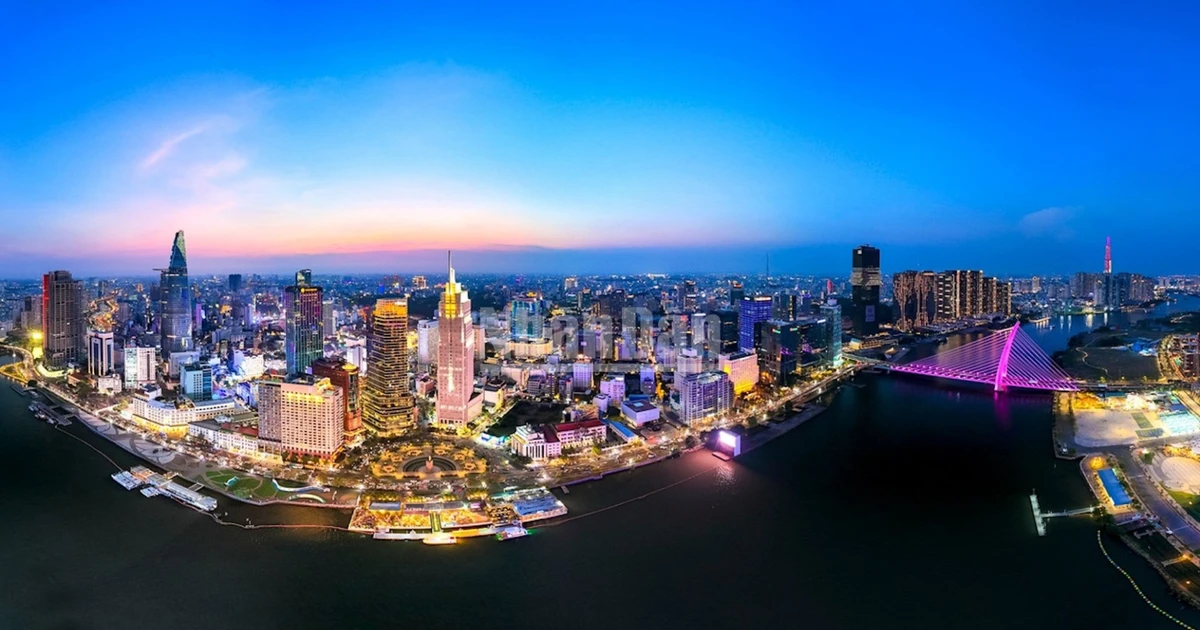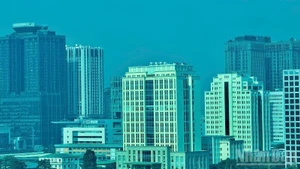Advantages of agriculture
After the merger, Dong Thap province has a durian area of nearly 29,000 hectares, with an output of about 470,000 tonnes. Of which, the locality has granted 350 export growing area codes, with an area of nearly 14,100 hectares.
Nguyen Van Hung, Cai Lay ward (Dong Thap province) grows 0.7 hectares of durian for more than 10 years. Over the years, he has changed his mindset from traditional farming to approaching science and technology, recording production diaries, applying standard processes, contributing to improving product quality and selling at higher prices.
Hung shared that: “Previously, my family only planted fruit in the favourable season, so the selling price was not high, and the profit was not much. After that, I researched and learned from predecessors and training courses of agricultural officials, so I boldly planted fruit in the unfavourable season. In the past two crop seasons, my family successfully handled unfavourable season fruit, selling at twice the price compared to the favourable season. Notably, in the 2024 crop season, the garden had 125 trees but sold 12 tonnes, of which 80% of the products were grade 1. With an average price of 110,000 VND/kg, the profit after deducting expenses was nearly 1 billion VND”.
With many years of experience, Hung has a firm grasp of the production process, from flowering to fruit setting. Thanks to that, durians have a consistent quality, and are purchased by businesses and traders at high prices right in the garden.
Pineapple has been associated with the Dong Thap Muoi region of Dong Thap province for over 30 years. This is a crop that has helped the acid sulfate soil area revive strongly and become a source of livelihood for thousands of households. Currently, the area has reached nearly 15,000 hectares, with an output of over 250,000 tonnes.
Ho Van Bay, Hung Thanh commune (Dong Thap province), happily cultivates 18 hectares of pineapple, saying that every year, his family’s commercial pineapple output reaches about 380 tonnes, with a total revenue of nearly 3.7 billion VND. After deducting expenses, the profit is over 1.5 billion VND.
In recent years, he and pineapple farmers have focused on applying scientific and technical measures, so the productivity and output of each year are higher than the previous year, ensuring quality, being favoured by consumers, affirming the Tan Phuoc pineapple brand.
In addition to selling fresh fruit, many businesses and people here also take advantage of pineapples that do not meet export standards to process and make many high-value products such as pineapple candy, pineapple caramel, pineapple soft drinks... to serve the market.
Focusing on key products
Currently, Dong Thap province has a rice growing area of over 610,000 hectares, with an output of over 4 million tonnes (ranked 2nd in the country); 311 export growing areas have been granted, with a total area of nearly 48,000 hectares. The flower, ornamental and short-term industrial crop sector has a planting area of over 87,000 hectares, with an output of over 1.7 million tons; 50 growing areas for export, with a total area of nearly 2,000 hectares.
Fruit trees have a total planting area of over 134,000 hectares, with an output of 2.5 million tonnes, with about 1,000 growing areas for export, with a total area of 48,600 hectares. The livestock sector has over 2,600 farms/114,500 livestock facilities. The aquaculture sector has an area of over 22,000 hectares, with an output of about 930 million tonnes.
Applying technology to serve agricultural production. Director of the Department of Agriculture and Environment of Dong Thap province Le Ha Luan said that in order to improve efficiency and increase competitiveness, the province's agricultural sector has reorganised production on the basis of internal and sectoral restructuring, focusing on key industries, associated with the development orientation towards ecology and sustainability, meeting the increasingly high quality standards of the market.
Many agricultural production organisation models have been adjusted to better suit the requirements of enterprises, markets and export standards. Notably, digital transformation in agriculture is identified as one of the core driving forces promoting the process of restructuring and modernisation of agriculture. Many models and technological solutions have been deployed and replicated such as: digital data platforms on agriculture, smart irrigation systems, application of drones in sowing and spraying, synchronous mechanisation in production stages, automation in livestock farming... These applications not only help reduce costs and increase productivity but also contribute to information transparency, traceability, and enhance the value and competitiveness of agricultural products.
Developing the value chain of the industry is the foundation for reorganising production, business and services in agriculture and rural areas in accordance with the specific conditions of each industry, linked to the needs and meeting the criteria and standards of the market to ensure the distribution and consumption channels of products; developing and reorganising the domestic and foreign consumption markets; contributing to promoting economic restructuring, associated with innovation of the growth model; forming large-scale, concentrated, commodity agricultural areas in a modern direction, adapting to climate change and protecting the environment; forming large-scale, high-quality commodity agricultural areas that meet common standards on food safety, associated with geographical indications, growing area codes and traceability...
Director of the Department of Agriculture and Environment of Dong Thap province Le Ha Luan
In addition, the provincial agricultural sector not only focuses on improving productivity and output but also strongly shifts to improving the quality of agricultural products. The development, selection and use of high-quality plant and animal varieties are given attention and investment, gradually meeting the processing requirements and domestic and export markets.
According to Luan, with the viewpoint of innovation, science and technology and institutional reform as the driving force for the development of civilised farmers. Therefore, the locality aims to build a team of professional, qualified, well-trained farmers, participating in collective economic organisations such as cooperatives, cooperative groups, guilds, and farmer clubs that are good at doing business; gradually forming a class of farmers with a market mindset, proactively transforming production models, having a sense of responsibility, cooperation and connection.
In the general development trend of the whole country, Dong Thap agriculture has stable development, high growth and especially has many creative models, good ways of doing things, many models are approaching in an ecological direction.
